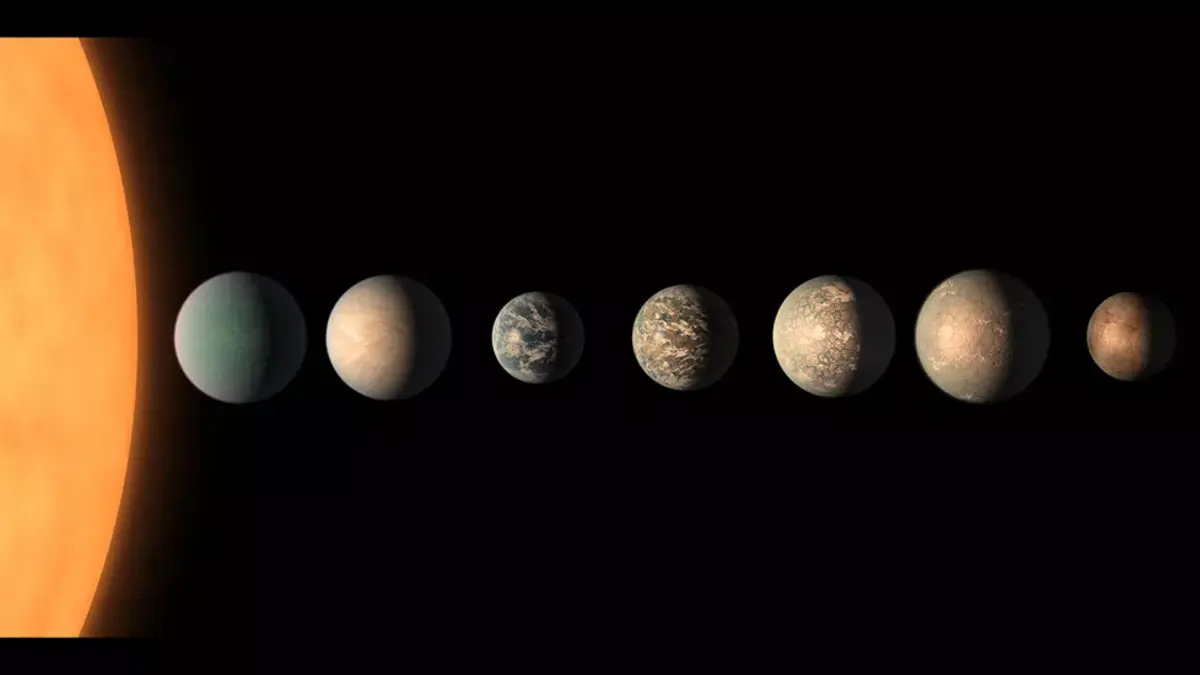The TRAPPIST-1 star system contains six exoplanets of similar sizes to Earth orbiting a red dwarf that is less bright and hot than the Sun. Three of these worlds are located in the habitable zone around the star, which made scientists interested in them in the search for extraterrestrial life. But the results so far show that things may not be as expected.
The star system is about 40 light-years from Earth, and its first two planets have been analyzed by the James Webb Space Telescope. TRAPPIST-1b and TRAPPIST-1c orbit in a region too hot to support liquid water, and recent observations also indicate that they are unlikely to have an atmosphere.
James Webb’s data showed that the first two planets could be bare rock or have atmospheres made up of heavy molecules, such as carbon dioxide, that are too thin to be detected. This discovery ends up indicating the existence of life on planets in the habitable zone, TRAPPIST-1 d, e and f. If exoplanets b and c have atmospheres, other planets are likely to exist.
Read more:
Contamination of observations by stellar radiation
In addition, the observations also found interference caused by the red dwarf’s radiation in the exoplanet analysis. The light from the star ends up polluting the planet’s spectrum.
The brightness of a star is important in observations, because it allows astronomers to observe the radiation filtered out by the atmosphere and determine its composition. However, the red dwarf is very active, possessing dark spots and bright streaks that create ghostly signals in the spectrum. The researchers point out that it is important to find a way around these interferences, because they are likely to also appear when observing planets in the habitable zone.
In addition to contamination from stellar spots and facies, we saw a stellar flare, an unpredictable event during which a star appears brighter for several minutes to hours. This explosion affected our measurements of the amount of light blocked by the planet. Such signatures of stellar activity are difficult to model, but we need to take them into account to make sure we are interpreting the data correctly.
Olivia Lim, the study’s lead author, responded IFLScience
The TRAPPIST-1 exoplanet receives a lot of radiation from the red dwarf, which means that if it had a large atmosphere, it would be easy to detect. Moreover, the results of the observation, recently published in Astrophysical Journal Letterswere consistent with previous analyzes conducted by another James Webb tool.
Have you watched the new videos on Youtube From Olhar Digital? Subscribe in the channel!

“Hardcore beer fanatic. Falls down a lot. Professional coffee fan. Music ninja.”






More Stories
The law allows children and adolescents to visit parents in the hospital.
Scientists pave the way for the emergence of a new element in the periodic table | World and Science
Can dengue cause hair loss? Expert explains how the disease affects hair